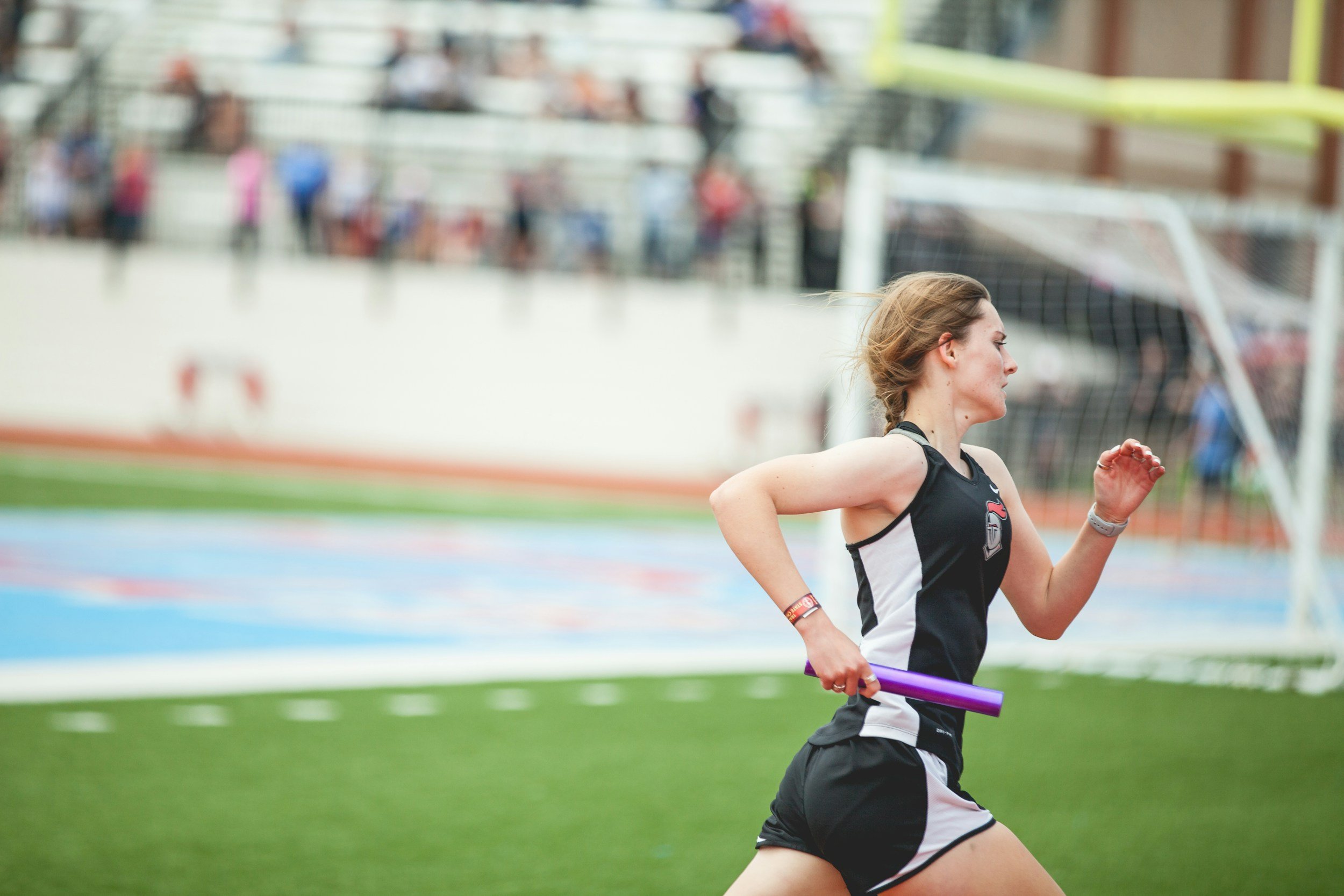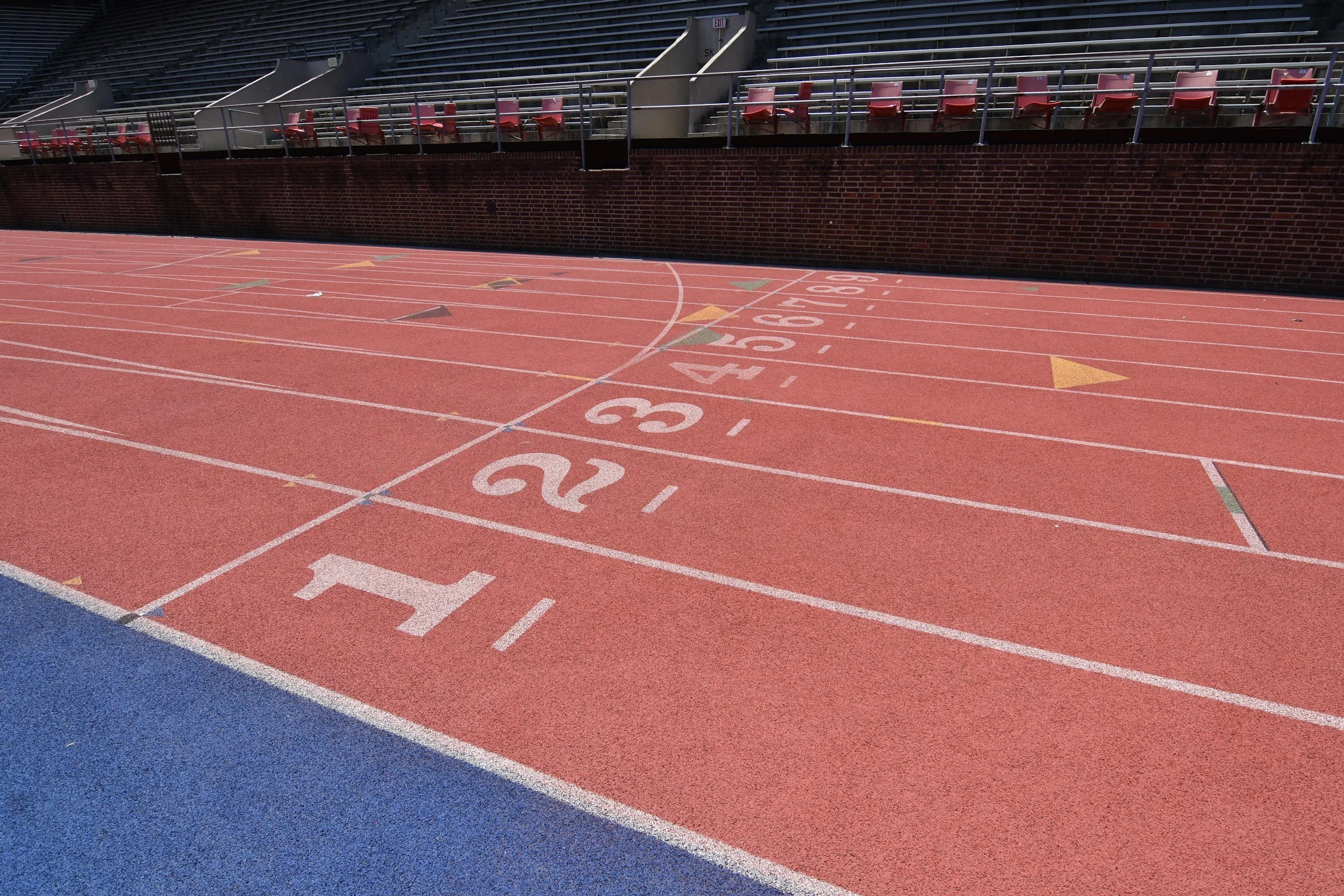9 Stretches for Runners
Stretching is necessary for any athlete who wants to excel at their sport. From Sydney McLaughlin to Stephen Curry, the best athletes have the baseline mobility & flexibility needed to do well in their sport.
Why?
Flexibility is a key aspect of athletic performance. It allows your muscles to perform at maximum ability. When muscles are tight or strained, through a lack of flexibility, it is harder to maintain good form, proper posture, and muscle coordination. It can also make you injury-prone. All factors which may ultimately be hindering your athletic performance.
Stretching helps your performance by developing mobility and flexibility. It helps maximize an athlete’s range of motion, so they can vastly improve on the track, field, and court. Routine stretching also helps athletes keep their muscles in proper form. This diminishes the chance of injury and enables athletes to get more out of their season.
The following list details stretches for 10 key muscle groups.
When carrying out each stretch, be mindful of the following:
The following stretches should be performed for about 20 to 30 seconds
Deep stretching, where you hold stretches for more than 45 seconds, is not suggested to do immediately before a workout
Deep stretching can be helpful for off-days or during recovery
Slight pulls of relief or subtle pain are typical during stretching.
No stretch should ever leave the athlete feeling intense pain.
If intense pain is felt during a stretch, it is advised to stop immediately.
1. Hamstrings
To stretch your hamstrings, sit on the ground with your legs in front of you and legs shoulder-width apart. Toes can be pointed forward or dorsiflexed. Extend your arms up, then hinge at your hips, and bring your arms down. Keep moving along your legs until you feel a slight pull in your hamstrings. Once you feel a stretch, hold the position. You can also perform this stretch by standing up in the classic touch-your-toes stretch.
2. Quadriceps
For a quad stretch, stand tall with your legs shoulder-width apart. Raise your right leg and use your right arm to gently pull your heel close to your butt. Move your heel to your but slowly and place minimal pressure on your joints when pulling. Also, be sure to keep your spine straight during this exercise.
3. Shoulders & Arms
To stretch the shoulder region, extend your arms above your head. Take your right arm and move it towards your left shoulder. Cross your left arm over your right arm, pushing down at the elbow until you feel the stretch. Repeat this on the other side
4. Calves
To stretch the calves, find a sturdy surface you can push against, like a wall or fence. Then, extend pushing against the surface, lacing one leg in front of the other. The leg in the back should be straight, and the leg in front should bend at a 45-degree angle. Push against the wall until you feel a stretch in your calf. Repeat this on the other side
5. Lumbar Spine (Hips & Lower Back)
The knee to chest movement is a great stretch for the lumbar spine region. First, lay on your back, keeping a straight spine and neutral head. Then, raise the knee on your right leg to your chest. Only use your arms to add extra tension. Do not pull too tightly against your knee. For a deeper stretch, circle your leg slightly in this position. Repeat this on the other side.
6. Butterfly Stretch
Sit down on the ground with your legs in front of you. Bring your right leg towards your groin bending until it is at a comfortable position, and the sole of the foot is facing your left thigh. Pull your left leg in a similar manner, so that the soles of your feet are touching. Hold this position for 15 seconds. Then, apply very light pressure with your hands to the top of your knees for a deeper stretch.
7. Hurdle stretch
To do the hurdle stretch, sit on the ground with one leg extended in front of you and the other bend behind you. This position should resemble the mid-air post taken when hurdling. Keep the hips square and spine straight. Then, lean forward. This stretch is particularly helpful for opening up the hips.
8. Pigeon Pose
The pigeon pose is an incredible stretch for opening up the hips, glutes, and tendons in the posterior chain. To do the pigeon pose safely, it is important to keep your hips square, back neutral, and all parts of your body in a straight line. To do the stretch, first, get into a lunge position. Then, move the leg in front of the floor. Once the knee of that leg is on the ground bend it towards you, and lean forward. For a deeper stretch, you can try to make the shin portion of the leg in front to be parallel to your hips. Note that this modification is a rather advanced one.
9. Cossack Squat
Start standing in a straddle position, keeping your feet roughly a meter apart. Slowly lower to one side. As you lower, try to keep your back relatively in line with your back. You do not want to stick your but out. Slowly lower your butt towards your right ankle, focus on your balance, and move slowly. Once your butt is as close to the right ankle as feels comfortable, hold this position for about 10 seconds. Shift your weight to rise again, and repeat on the left side.































